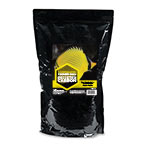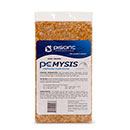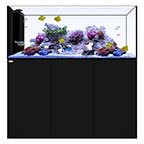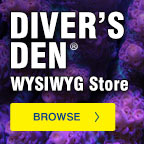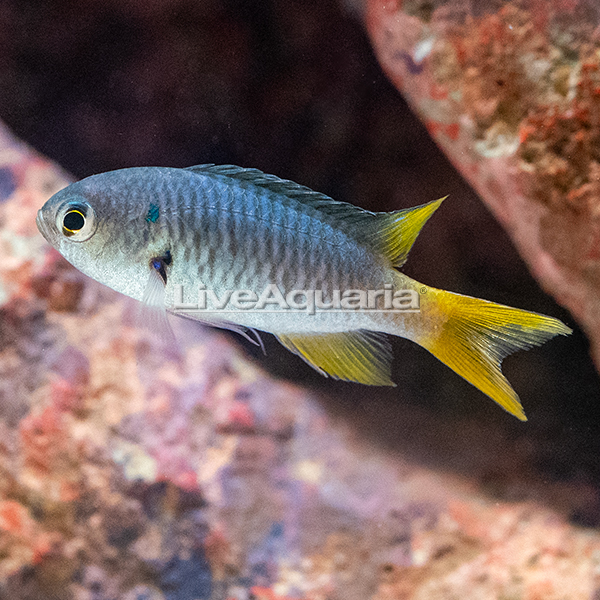
Additional locales and sizes may be available!
Additional locales and sizes may be available! Email me when availableQuick Stats
What do these Quick Stats mean? Click here for more information
What do these Quick Stats mean? Click here for more information
Overview
The Coral Demoiselle (Neopomacentrus nemurus), also referred to as the Yellow-tipped Damsel, is a colorful marine fish native to the western and central Pacific Ocean. Its range includes Indonesia, the Philippines, Papua New Guinea, and Australia. Due to this broad distribution, individuals may show slight color differences, typically featuring a dark or light blue-grey body, sometimes with a striking yellow tail fin.
To ensure proper behavior and reduce aggression, a minimum tank size of 55 gallons is recommended. While Coral Demoiselles can be territorial, keeping several together is possible if they are introduced at the same time and given adequate space to establish their own territories.
This species is omnivorous, feeding on a mix of zooplankton, algae, and small crustaceans in the wild. In the home aquarium, they should be offered a varied diet that includes marine flake food, algae-based preparations, and small meaty items such as mysis or brine shrimp.




